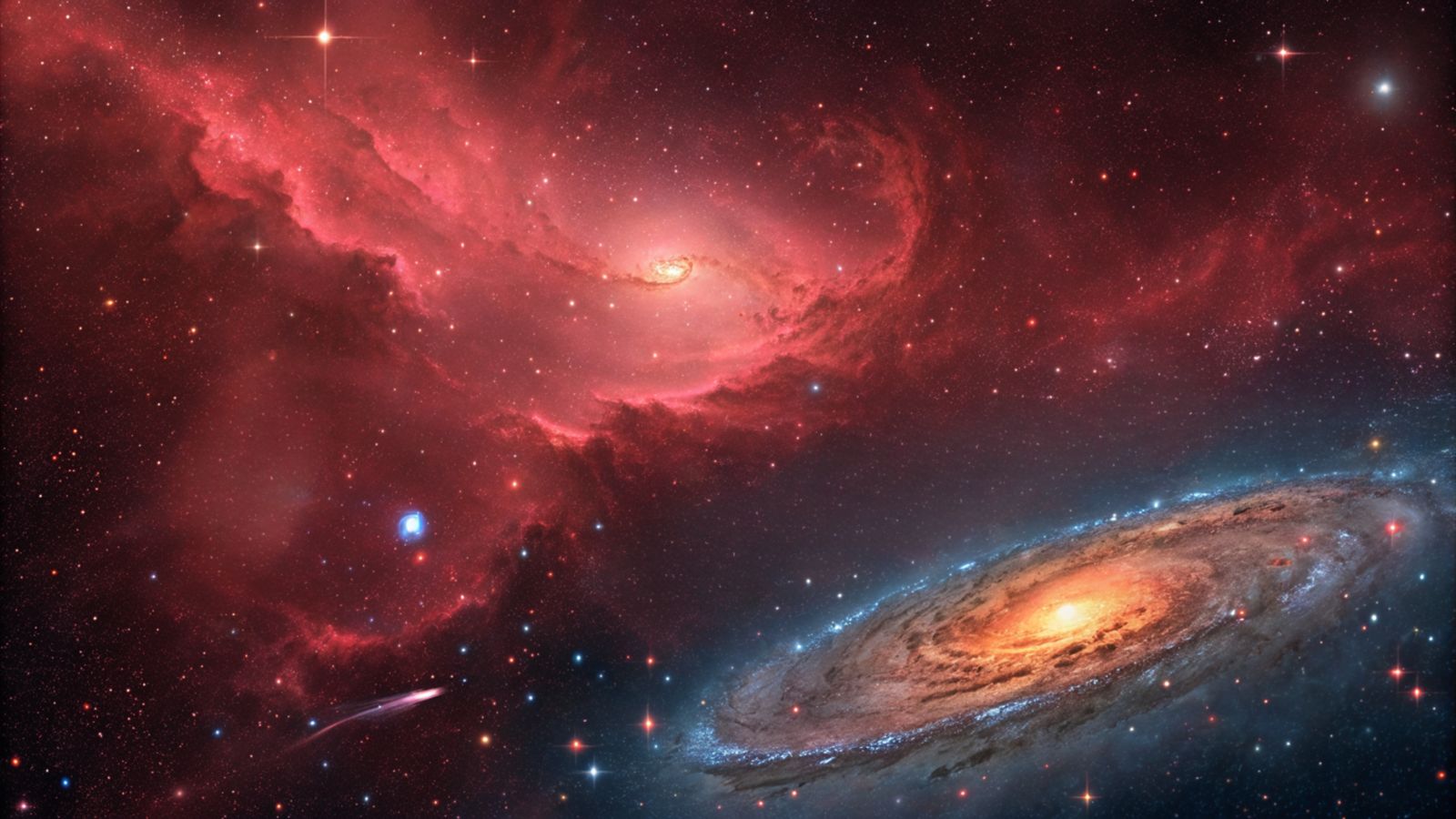👀 The "visible" but missing matter of the Universe finally located
Follow us on Google News (click on ☆)
Long considered absent, this missing matter had puzzled theoretical models for decades. It hides neither in stars nor in galaxies, but is now revealed through elusive signals from the far reaches of the Universe.

These signals, called fast radio bursts (FRBs), manifest as flashes of radio waves lasting only a few milliseconds. They travel through intergalactic space, affected by everything they encounter on their way to Earth. It's this interaction that allowed researchers to indirectly measure diffuse matter.
From the analysis of 69 FRBs detected across the Universe, scientists were able to estimate the density and distribution of this long-elusive matter. By studying the delay of radio waves according to their frequency, they could deduce the mass of the hot, diluted gas they passed through.
This gas forms what is called the intergalactic medium: a web of matter heated to millions of degrees, invisible to the naked eye and difficult to detect even with the most powerful instruments. Yet this is where most of the Universe's baryonic matter would be concentrated.
According to the study's results, about 76% of this ordinary matter is found in this intergalactic medium. Galactic halos, spheres of gas surrounding galaxies, contain nearly 15%. The remainder consists of stars, planets and cold gases that we directly observe.
This new balance accounts for all the matter produced at the time of the Big Bang, a result astronomers have been waiting for decades. It also shows the growing interest in FRBs as tools for cosmic exploration.
For now, the exact origin of FRBs remains uncertain, although some suspect neutron stars or extreme phenomena related to black holes. But their usefulness for probing the darkest areas of the Universe is already confirmed.
This is not dark matter
The matter revealed by this study should not be confused with dark matter, which is far more enigmatic. The recently located matter is called "baryonic," meaning it's composed of classical particles like protons and neutrons. This is the matter that makes up the visible objects of the Universe, including stars, planets and even our own bodies.
For several decades, physicists knew that this baryonic matter represented only a small fraction of the entire cosmos: about 5%. But observations could only account for half of this portion. The other half seemed untraceable, although it must exist according to Big Bang models.
Dark matter, on the other hand, doesn't belong to this category. It would represent more than a quarter of the Universe's composition, but it doesn't interact with light or electromagnetic waves. Invisible by nature, it remains inaccessible to the techniques used here. Fast radio bursts have only allowed the study of ordinary matter, now better mapped, but they still say nothing about dark matter.
What is a fast radio burst (FRB)?
Fast radio bursts are extremely short pulses of radio waves, lasting a few milliseconds. They are among the most energetic phenomena in the Universe, although their origin remains mysterious.
Most FRBs come from outside the Milky Way, making them difficult to study. Their discovery opened a new window for studying the Universe, allowing scientists to probe otherwise inaccessible regions.
Theories about their origin include highly magnetized neutron stars, collisions between compact objects, or even extraterrestrial signals. However, none of these hypotheses has been definitively confirmed.
The study of FRBs continues to progress, with more sensitive instruments and improved analysis methods. These efforts might soon solve the mystery of these enigmatic cosmic signals.
How does baryonic matter influence the Universe?
Baryonic matter, although representing only a small fraction of the Universe, plays a crucial role in the formation of cosmic structures. It constitutes stars, planets and everything we can see and touch.
This matter interacts with light, allowing astronomers to study it directly. However, much of it was until recently invisible, hidden in intergalactic space as diffuse gas.
The discovery of this missing matter helps solve fundamental questions about the evolution of the Universe. It also confirms cosmological models predicting the total amount of baryonic matter produced during the Big Bang.
Understanding the distribution and properties of baryonic matter is essential to unravel the secrets of galaxy formation and the large-scale structure of the Universe.